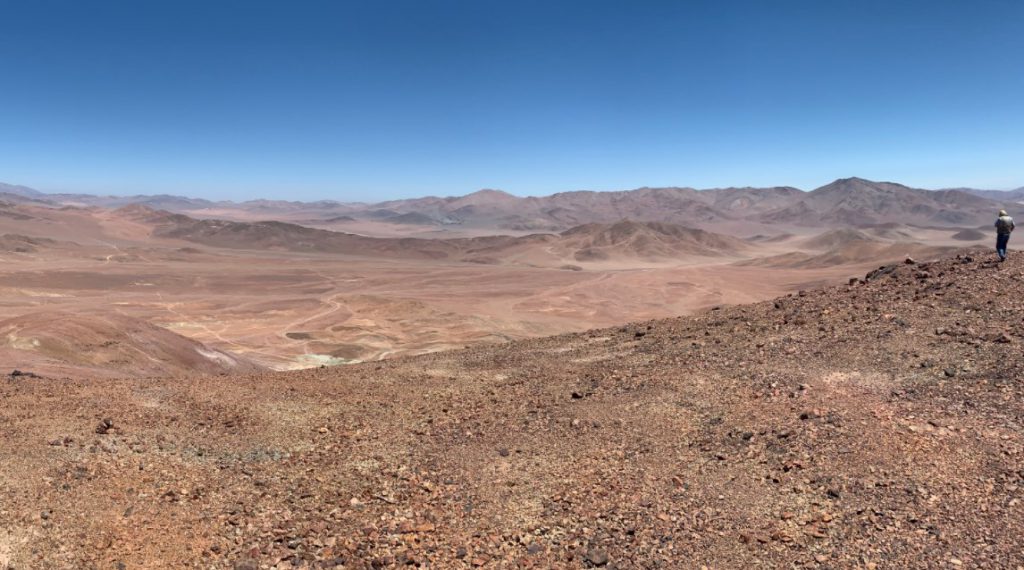Torq Resources options Santa Cecilia gold-copper project, Chile, shares up

Torq Resources Inc. [TORQ-TSXV; TRBMF-OTCQX; S8QA-FSE] has acquired an option to earn a 100% interest by paying US$25 million and spending US$15.5 million on exploration, subject to an NSR, on the 3,250-hectare (32.5 km2) Santa Cecilia gold-copper project, located approximately 100 km east of the city of Copiapo, northern Chile.
The project is in the southern region of the world-class Maricunga belt and immediately north of the El Indio belt. It is estimated the Maricunga belt could host up to 90 million ounces of gold in a belt is characterized by gold epithermal and gold-copper porphyry deposits, including multi-million-ounce deposits such as Salares Norte, La Coipa, Cerro Maricunga, Marte, Lobo, La Pepa, El Volcan, Caspiche and Cerro Casale.
The Santa Cecilia project is located immediately adjacent to the Norte Abierto project, held by Newmont and Barrick, which is comprised of the Caspiche and Cerro Casale gold-copper porphyry deposits. Collectively, these deposits contain proven and probable reserves of 23.2 million oz gold and 5.8 billion lbs copper and measured and indicated resources of 26.6 M oz gold and 6.7 B lbs copper.
Limited historical exploration work at Santa Cecilia was performed by the previous operator, a major international mining company in 1988-1990 when it drilled 47 holes, totaling ~14,000 metres, and completed 1,200 metres of exploration tunnel development that defined epithermal gold and gold-silver mineralization as well as gold-copper porphyry mineralization at surface and shallow depths, respectively.
A subsequent operator drilled two deeper holes in 2012 that successfully encountered gold-copper-molybdenum porphyry mineralization underlying the shallow mineralization defined by the previous operator.
Shawn Wallace, Executive Chair, said, “The Santa Cecilia gold-copper project represents the culmination of our acquisition strategy in Chile. It is our belief that exploration at a project of this magnitude will be transformative for Torq.”
There are three primary target types associated with the 10 square km surficial hydrothermal alteration footprint: Surface epithermal disseminated oxide gold mineralization defined by the previous operator’s shallow drilling, high-grade gold-silver epithermal structures and veins, as observed in the previous operator’s exploration tunnel and associated drilling, and underlying copper-gold-molybdenum porphyry mineralization analogous to the Newmont/Barrick Caspiche and Cerro Casale deposits, as defined by the 2011-2012 drill holes.
At the Cerro del Medio Target, drill highlights from previous operator (1988 – 1990) included 256 metres of 0.43 g/t AuEq, or 0.37 g/t gold and 0.04% copper in hole SP-SC-23. Hole SP-SC-24 returned 162 metres of 0.58 g/t AuEq, or 0.36 g/t gold and 0.14% copper. Refer to company press release for more similar drill results.
The Vetas Condor high-grade gold – silver epithermal mineralization is encountered on the western flanks of the Cerro del Medio target area where east-west trending quartz-alunite structures are exposed over a 1 km by 350-metre area.
The previous operator completed 1,100 metres of horizontal exploration tunnels that were oriented sub-parallel to parallel to the quartz-alunite ledges. Highlighted intercepts from this section of the tunnel, while not true width, demonstrate the high-grade potential of the structures, and include 2.38 g/t gold and 101 g/t silver over 32 metres and 0.66 g/t gold and 13.5 g/t silver over 134 metres. In addition, ~436 metres into the tunnel, a high-grade vein sampled 58 g/t gold and 27 g/t silver over 2 metres. At the Vetas Condor Target, drill results from previous operator (1988-1990) included 20 metres of 7.05 g/t AuEq.
In late trading October 22, shares of Torq gained $0.16 to $0.80 on a volume of 890.000.
